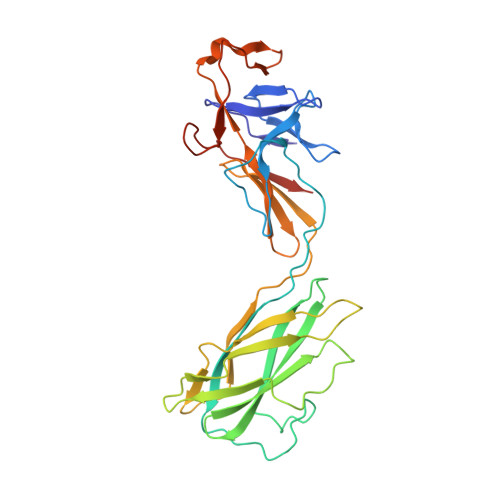Structure of the bacterial flagellar hook and implication for the molecular universal joint mechanism.
Samatey, F.A., Matsunami, H., Imada, K., Nagashima, S., Shaikh, T.R., Thomas, D.R., Chen, J.Z., Derosier, D.J., Kitao, A., Namba, K.(2004) Nature 431: 1062-1068
- PubMed: 15510139
- DOI: https://doi.org/10.1038/nature02997
- Primary Citation of Related Structures:
1WLG - PubMed Abstract:
The bacterial flagellum is a motile organelle, and the flagellar hook is a short, highly curved tubular structure that connects the flagellar motor to the long filament acting as a helical propeller. The hook is made of about 120 copies of a single protein, FlgE, and its function as a nano-sized universal joint is essential for dynamic and efficient bacterial motility and taxis. It transmits the motor torque to the helical propeller over a wide range of its orientation for swimming and tumbling. Here we report a partial atomic model of the hook obtained by X-ray crystallography of FlgE31, a major proteolytic fragment of FlgE lacking unfolded terminal regions, and by electron cryomicroscopy and three-dimensional helical image reconstruction of the hook. The model reveals the intricate molecular interactions and a plausible switching mechanism for the hook to be flexible in bending but rigid against twisting for its universal joint function.
- Dynamic NanoMachine Project, ICORP, JST, 1-3 Yamadaoka, Suita, Osaka 565-0871, Japan.
Organizational Affiliation:
















